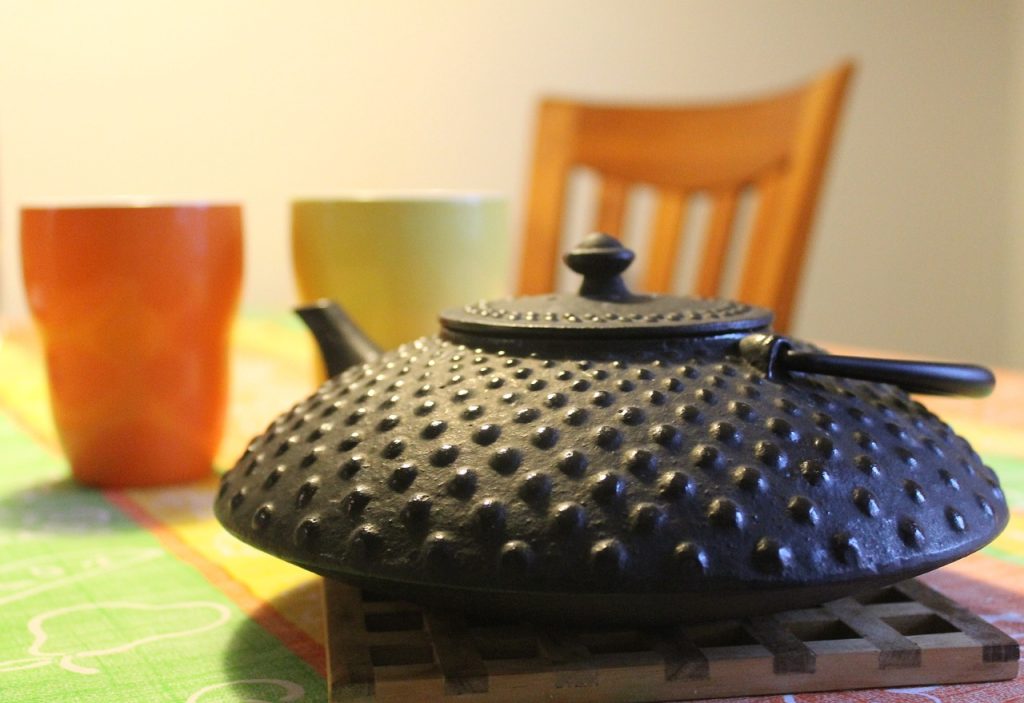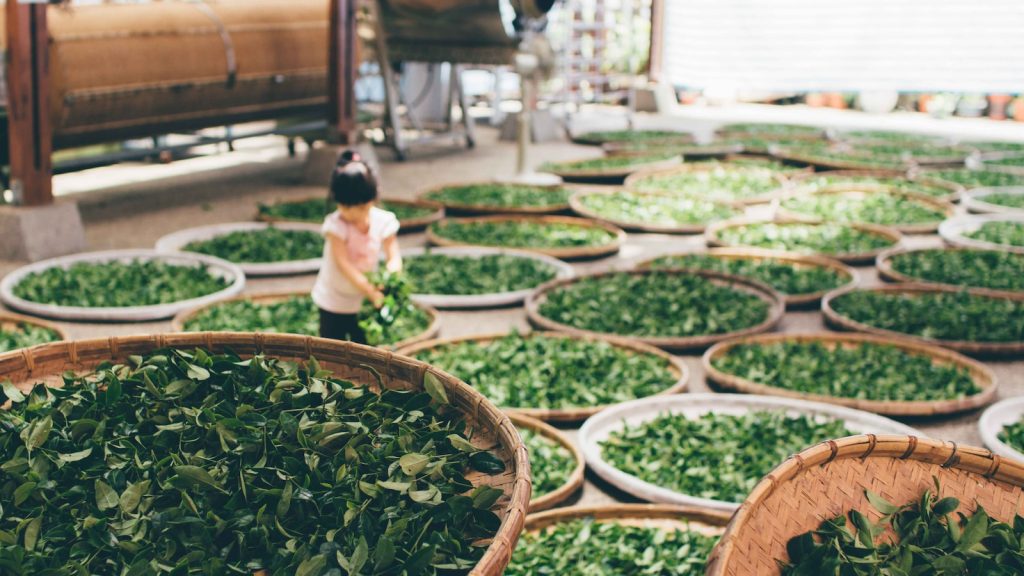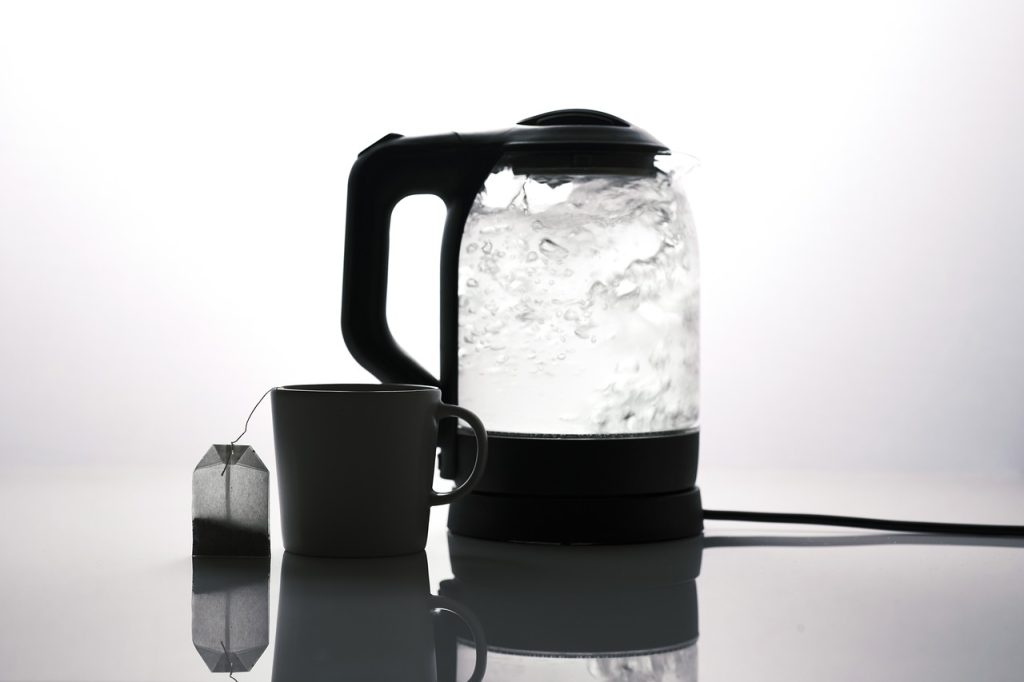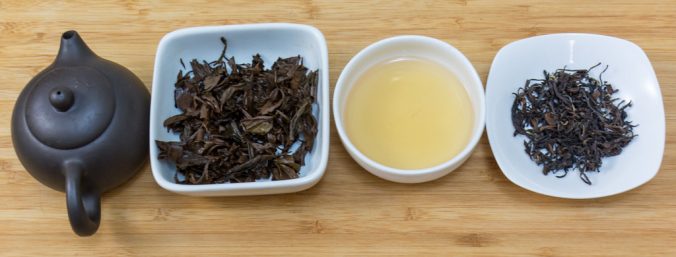Table of Contents
- Introduction to our guide on How To Brew Oolong Tea
- What Is Oolong Tea?
- How Is Oolong Tea Made?
- Where Does Oolong Tea Come From?
- How Does Oolong Tea Taste?
- How To Brew Oolong Tea Properly?
- How Long To Steep Oolong Tea?
- How To Brew Loose Leaf Oolong Teas Gong Fu Style
- Oolong Tea Brewing Tips
- Best Oolong Temperature
- Cold Brewing Oolong Tea
- Taste And Flavor Of Oolong Tea
- Frequently Asked Questions about Oolong Tea
- Conclusion
Introduction to our guide on How To Brew Oolong Tea
A cup of oolong tea is like a breath of fresh air – it’s full of complexity, with subtle notes that dance across the tongue. Brewing this special type of tea takes patience and skill to get just right, but when you do, it will be worth all the effort. The journey to perfecting your own oolong tea starts with understanding what makes an excellent brew; let me take you on a voyage through time and taste as I explain how to make the best possible cup of oolong!
The first step in brewing any kind of tea is sourcing quality ingredients. Oolong teas come from China, Taiwan, or other parts of Asia where they are harvested at specific times during the year for optimal flavor. If you’re looking for something truly unique, try some rare varieties such as Tieguanyin or Wuyi rock tea – these can really elevate your experience and bring complexity to each sip. Once you’ve picked out the perfect leaves, store them properly until ready for use so that their aroma and flavor won’t diminish over time.
Now comes one of the most important steps: preparing the water correctly so that it brings out every note within your chosen blend. For oolong teas, boiling water works well since its temperature range suits this particular type perfectly; if boiled too long though, it could leave a bitter aftertaste in your drink. To ensure perfection every time, invest in a thermometer so you know exactly when to stop heating up your liquid gold! Now that we have everything ready, let’s learn about how to steep our beloved beverage…
What Is Oolong Tea?
Brewing the perfect cup of oolong tea is a skill that takes time and practice. Take Sarah, for example – she spent years honing her technique to get it just right. Oolong tea is one of the most complex types of tea available, so it’s important to understand what goes into making an excellent cup of this beloved beverage.
Oolong tea can be described as falling somewhere between green and black teas in terms of oxidization levels. It has a distinctive flavor profile with notes ranging from creamy to floral, depending on how long you brew the leaves. The key difference between oolong and other varieties is its brewing time: while green or white teas may take only three minutes, oolong requires five to seven minutes for optimal taste. That extra few minute helps bring out all the flavors hidden within these lovely tea leaves!
When it comes to enjoying a great cup of oolong, timing really is everything. Too short a brew will result in weak-tasting tea, while too long leads to bitterness. Once you’ve mastered your own preferred method (which might involve further experimentation!), you’ll have developed a deep appreciation for the artistry behind crafting each unique flavor profile found in good quality oolong teas.
How Is Oolong Tea Made?

Brewing oolong tea is an art form. It’s a skill that takes patience and practice to master; however, with the proper tools and knowledge, anyone can brew a delicious cup of it! Here’s how to do it like a pro:
Time needed: 15 minutes
How to Brew the Perfect Cup of Oolong tea
- Get everything you need ready
Start by gathering your supplies – you’ll need your favorite type of oolong tea, as well as a gaiwan or teapot set. If possible, use filtered water for the best-tasting results.
- Measure out your tea leaves
Measure out your desired amount of tea leaves – usually around 3 grams per 8 ounces of water – into the bottom of the pot or gaiwan depending on which one you’re using.
- Warm your water up
Get your water to the temperature that you would like to brew your tea in.
- Pour the hot water over the tea
Pour hot water over the leaves in stages during the steeping process. This technique is known as ‘Gong Fu’ brewing and allows for more flavor extraction from each steep time. Aim for about 30 seconds to 1 minute for the first infusion, then add 5-10 additional seconds with each following infusion until you reach your desired taste level.
- Let Tea steep
Depending on your preference you will want to measure the steeping time before enjoying
- Drink your tea
Enjoy! Once all infusions have been completed, strain off any remaining liquid and pour yourself a nice warm mug of oolong tea perfection. No matter if you’re drinking alone or entertaining friends, this classic method will make sure every sip tastes amazing!
Where Does Oolong Tea Come From?
Oolong tea has been around for centuries and is one of the most popular Chinese teas. In fact, oolong tea accounts for 2% of all the tea consumed in the world today! This incredible statistic speaks to its popularity amongst tea lovers across cultures.
Where does this amazing tea come from? Oolong tea is derived from a variety of Camellia Sinensis plant leaves that are grown primarily in China and Taiwan. Tea growers carefully select these plants, pick their leaves and process them with great skill and attention to detail, bringing out natural flavors that makeup what we know as oolong tea. The processing techniques can vary depending on geographic location or a specific type of oolong – some may be heavily oxidized while others lightly so. There are also other popular terms used such as semi-fermented or partially fermented when referring to certain types of oolong.

To summarize, oolong tea comes from a particular kind of Camellia sinensis plant native to China and Taiwan where it’s picked by experienced hands and processed using various methods resulting in unique flavor profiles that range greatly between regions or even within regions themselves! Whether you prefer something light or dark, floral or earthy, there’s an oolong just right for you!
How Does Oolong Tea Taste?
Oolong tea is an incredibly flavorful beverage, and it’s enjoyed around the world for its unique flavor profile. Brewing oolong tea correctly can make all the difference between a mediocre cup of tea and one that will leave you wanting to come back for more! When brewed with care, oolong teas offer a delightful range of flavors, from light and floral to deep roasted notes. It truly depends on which type of oolong is used – each brings something new to the table!
When brewing your own cup of oolong tea at home, there are many factors to consider in order to get the best flavor possible. The water temperature should be just right; too hot or cold can ruin any good cup of oolong. The length of time that you let it steep also affects the intensity and complexity of flavors found in the finished product. Generally speaking, lighter teas like green or white need only 1-2 minutes while darker types such as black or oolongs require 3-5 minutes.
The best way to understand what kind of flavor experience you’ll have when drinking oolong tea is by trying different varieties yourself. All oolongs vary slightly depending on where they’re grown, but some standouts include Da Hong Pao (a dark roasted variety) and Tieguanyin (an aromatic floral blend). With these two alone you can get an idea for both ends of the spectrum – try them out for yourself if you want to explore further into the wonderful world of flavor that comes with making the perfect pot of oolong tea!
How To Brew Oolong Tea Properly?
Brewing oolong tea is a special skill that can be mastered with practice. It all starts with the right kind of loose leaf oolong and water temperature. If you’re looking to make a delicious cup of tea, then you’ll need to get these two factors just right!
When it comes down to it, your preference will dictate exactly how many grams of tea you use for each cup. Generally speaking, though, I recommend between 4-5g per 8oz cup or mug – so if you have 2 cups worth of liquid, use around 10g leaves.
It’s also important not to forget about the water temperature; this should range from 195F (90C) up to 205F (96C). Once the boiling point is reached turn off the heat and let cool slightly before pouring over tea leaves in a teapot or brewing vessel. A good steep time would be anywhere from 1-4 minutes depending on taste preferences. With patience and practice, you’ll soon become an expert in brewing oolong tea!
How Long To Steep Oolong Tea?
Brewing the perfect cup of oolong tea is an art form! And while knowing how long to steep your carefully chosen leaves can be a bit tricky, with just a few tips you’ll soon become a master. So let’s get started and learn all about steeping oolong tea just right!
When it comes to brewing oolong tea, timing really is everything. Too little time in hot water will mean that your cuppa won’t have enough flavor, but too much could turn it bitter or even sour. Fortunately, there are some simple guidelines for achieving the ideal balance – anywhere from 1-3 minutes depending on personal preference. For those who like their tea lighter and more subtle, go for around one minute; for something bolder and stronger, aim closer to three minutes. It may take some experimentation before finding what works best for you – but trust us, it’s worth the effort!
No matter which type of oolong tea you choose to brew, always remember this golden rule: quality over quantity. The fresher the leaves are (and the better quality they are) the more flavorful your drink will be – so don’t skimp when buying your ingredients! Start off by using only small amounts of loose leaf tea per cup until you find out how strong you prefer it – then adjust accordingly. With these helpful hints in mind, we’re sure that you’ll make every cup of oolong count!
How To Brew Loose Leaf Oolong Teas Gong Fu Style
Brewing a cup of oolong tea gong fu style is akin to an art form. It requires patience, attention, and skill to master the technique in order to bring out the full potential of its flavor. The right tools are also essential for brewing loose leaf oolong teas that will wow your taste buds.
A yixing teapot is ideal when making gong fu tea as it enhances the flavor of certain types of Oolongs due to its porous clay material which absorbs flavors over time. Also, if you have a small enough pot then pre-measurement isn’t needed; simply add one heaping teaspoon per person into the teapot before pouring hot water over it! Make sure not to use boiling water but rather something just below boiling temperature (around 95 degrees Celsius).
Allow the leaves steep for two minutes or longer depending on how strong you want your brew. Once done with steeping, pour from the spout directly onto each individual’s cup while holding back any large chunks of leaves using a strainer. Enjoy your freshly brewed gong fu oolong tea!
Oolong Tea Brewing Tips
Brewing a cup of oolong tea is like an art. It’s not just about the ingredients and boiling water, but also about how you brew it that makes all the difference. As any true tea lover will tell you, brewing loose leaf oolong teas gong fu style requires skill, patience, and dedication to truly appreciate its subtle nuances and flavors.
For those who want to get into the craft of making perfect cups of oolong tea every time, here are some tips on getting the most out of your favorite loose leaf oolongs. First off, make sure you select high-quality oolong tea leaves for optimal flavor – this should be your top priority when choosing which type to buy. Once purchased, prepare enough leaves for each cup and use a generous amount as part of the brewing technique; after all, one cannot expect full-bodied results if too little is used! When heating up the water for infusion, aim for temperatures between 185°F (85°C) and 205°F (96°C), depending on the specific blend you’re working with – hotter water can lead to bitter-tasting results in certain varieties. Lastly, don’t forget to steep multiple times using shorter infusions; doing so allows more room for experimentation with different recipes while discovering unique aromas and tastes from each brew.
You will want to try to find good quality loose leaf oolong teas, use a generous quantity during the steeping process, and experiment with various temperature settings. With these simple tips in mind, anyone can become a master at crafting delicious cups of their favorite variety!
Best Oolong Temperature
When it comes to brewing oolong tea, temperature is key! Every true tea lover knows that the perfect cup of oolong relies on getting the temperature just right – too hot and you’ll burn off all those delicious aromas and flavors; too cold and your cup will be flat and lifeless.
I remember my first time making oolong at home. I was so excited but also worried about getting it right – there’s nothing worse than a bitter or flavorless brew! After some experimentation, I eventually learned how to get the best out of each type of oolong depending on its variety, roast level, and origin.

The good news is that most quality loose-leaf oolongs can be brewed in any kind of vessel with water between 195°F and 205°F (90°C – 96°C). For example, if you’re using a teapot then boiling water should be allowed to cool for 1-2 minutes before pouring over the leaves. Once steeped for 3-5 minutes, strain into cups or a teacup warmer for an optimal experience. Oolongs are delicate so keep an eye on your temperature as going even one degree hotter could ruin it all!
Brewing up a great cup of oolong requires patience but it’s worth it when you take that first sip: sweet, fragrant, and packed full of flavor. Tea lovers rejoice!
Cold Brewing Oolong Tea
Brewing oolong tea is an art in itself. Crafting the perfect cup of this fragrant, complex beverage requires a delicate balance of temperature, timing, and technique. Cold brewing oolong tea is one way to create an exquisite cup that’s full of flavor and aroma.
Cold brew tea takes longer than traditional methods, but it pays off with its smooth taste and lack of bitterness or astringency. It’s easy to do: all you need are loose-leaf oolong tea leaves, cold water, and some patience! Simply fill a pitcher or carafe with cool filtered water and stir in your desired amount of oolong tea leaves; let them steep for 8-12 hours in the refrigerator before pouring over ice – voila! A delicious concoction awaits.
The slow process used for cold-brewed teas brings out different nuances from the same type of tea leaves compared to hot brewed varieties. With cold brew oolong tea, expect flavors such as honey, caramelized sugar, or fruit notes like apricot or peach accompanied by floral aromatics. There’s no wrong way to enjoy this delightful drink – sip it straight up or add a splash of citrus juice for a fresh twist on classic iced tea!
Taste And Flavor Of Oolong Tea
Oolong tea is like a hidden gem, with its mysterious and complex flavor profile. Its deep, layered notes can satisfy the most discerning of taste buds and tantalize even those who aren’t familiar with the world of tea. As one of the most popular types of teas, oolong has been enjoyed for centuries by cultures around the globe. So what does it taste like?
The best way to describe oolong tea is that it tastes somewhere between black and green tea – not too strong and not too light. Depending on how you brew it, this type of tea can be anywhere from mild and fragrant to full-bodied and robust. Its unique flavor comes from its oxidation process which adds depth and complexity to each cup. Oolong also has subtle floral undertones that are often more pronounced depending on where in China or Taiwan it was grown.
When brewed correctly, oolong can produce some of the best flavors out there; many people prefer it over other kinds of teas because they find it has a smoother finish than either green or black tea alone. Whether you’re a seasoned drinker looking for something new or just getting into sipping your first cup of oolong, this delightful beverage will delight your senses with every sip!
Frequently Asked Questions about Oolong Tea
When it comes to tea, I’m all about Oolong! Not only does it have an amazing flavor and aroma, but there are also plenty of health benefits that come with drinking this delightful brew.
Being a high-quality tea, Oolong is packed full of antioxidants that helps fight off free radicals in the body – meaning you’ll be feeling better and healthier for longer. It’s also said to help boost metabolism and aid digestion, making it great if you’re looking to lose weight or just maintain your current figure. Plus, some studies suggest that regular consumption of oolong tea can reduce the risk of heart disease and lower cholesterol levels too.
Not only is Oolong one of my favorite teas because of its delicious taste but now I know what other advantages I get from drinking it every day; it’s truly a win-win situation! So next time you’re considering having a cup of tea, don’t forget how beneficial oolong could be for your overall well-being – make sure to give it a try!
Did you know that oolong tea has been enjoyed in China since the Ming Dynasty, over 600 years ago? It’s no wonder why it is still so popular today! As a seasoned tea lover, I often get asked if oolong tea contains caffeine. The answer is yes – but with some caveats.
Oolong teas can range from lightly caffeinated to highly caffeinated depending on how long they are oxidized. Teas that have undergone longer oxidation times tend to be higher in both flavor and caffeine content. Green oolongs will generally contain less caffeine than darker varieties such as red or black oolongs. Typically speaking, one cup of brewed oolong provides between 12-55 milligrams of caffeine – compared to around 95 milligrams found in an average 8 oz cup of coffee. However, because each type of oolong can vary significantly in terms of its caffeine content, it is important to check the label or do your research before purchasing a specific variety.
Brewing time also affects the amount of caffeine present in your drink; the longer you steep your tea leaves, the more concentrated and stronger (and sometimes bitter) the beverage may become — along with an increased level of caffeine! So if you’re looking for an energizing pick me up without too much kick, try steeping your oolong for only two minutes or less rather than four minutes or more. This way you will be able to enjoy all the delicious flavors and health benefits associated with drinking this wonderful ancient brew while avoiding any unwanted jitters!
Did you know, the world consumes over 5 billion cups of tea every day? Tea is a popular drink and with so many varieties available it can be hard to decide which one to choose. But if you’re considering oolong tea then understanding the difference between green and oolong may help make your decision easier.
Green and oolong are similar in that they both come from the same plant, Camellia sinensis. However, there are some key differences in how each type of tea is processed. Green tea is withered, steamed, or pan-fired while Oolong goes through an additional step known as oxidation. Oxidation is where leaves are left exposed to oxygen for a longer period of time resulting in a darker color and richer flavor compared to green tea.
For those looking for a unique taste experience, Oolong should definitely be given consideration! This semi-oxidized variety offers something quite different – its complex character ranges from sweet and fruity notes to roasted and woodsy flavors depending on the region it’s grown in. Furthermore, due to its oxidation process, oolong also has higher levels of antioxidants than green teas making it great for improving health.
So if you’re searching for an interesting new beverage that won’t disappoint on flavor or nutrition, why not give oolong a try?! A cup of this delightful brew could just become your next favorite thing!
As a tea lover, I often find myself wondering how many cups of oolong tea I should be drinking per day. After all, this delicious beverage can provide numerous health benefits to its drinkers! While green and oolong teas may come from the same plant, there are some key differences that make one an ideal choice over the other.
I’ve found through my own research and experience that when it comes to consuming oolong tea in moderation on daily basis, two to three cups is considered average. There’s no need to go overboard: too much of anything isn’t good for your body! Depending on the type of oolong you’re drinking, it will also have varying levels of caffeine content – something else worth considering when determining how much you’re going to drink each day.
When brewing with loose leaves or using bags rather than pre-made bottles, it’s important to pay attention to how long you steep your tea as well. Both the quantity and quality of the leaves used will affect both taste and potency so use caution if these factors vary greatly from what you’re accustomed to! Fortunately, once all those elements are taken care of properly then enjoying a cup (or two!) of this wonderful drink should become second nature – without risking any potential side effects from ingesting too much.
Conclusion
I’m a tea lover and I can’t get enough of oolong tea. There’s something unique about the flavor that sets it apart from other teas, making it my favorite go-to beverage for any occasion. Oolong has many health benefits such as promoting weight loss, boosting metabolism, and fighting off certain illnesses like cancer and heart disease. It’s also caffeinated and suitable for pregnant women in moderation.
All in all, oolong tea is a great way to stay healthy while enjoying its amazing flavor. So why not make yourself a cup today? You won’t regret it – just make sure you don’t overdo it by drinking too much!
